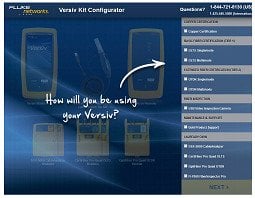Upgrading Your Fiber Plant to 40 and 100 Gigabit Speeds
September 8, 2016 / General, Upgrading and troubleshooting, Industrial Networks
Just Now Upgrading to 10 Gig? We Didn't Forget About You
While upgrading backbone cable plants in the LAN to support 10 Gig has been going on for several years since the release of the 10GBASE-SR standard for fiber, many enterprise businesses did not previously require these types of speeds, until now.
Data centers are rapidly migrating to 25, 40 and even 100 Gigabit speeds to accommodate an increasing amount of virtualized servers that host more applications than ever before and vast volumes of data that needs to be accessed, transmitted and stored. At the same time, the demand for high speed transmission in the LAN is at an all-time high for both wired and wireless connections.
While many larger enterprise businesses like universities and financial institutions have already upgraded their LAN backbones, there are still a vast number of others that are just now coming to the realization that 1 gigabit speeds are no longer adequate.
And with most of the information disseminated now focusing on upgrading fiber plants to support 40 and 100 gigabit speeds in the data center, we decided that those just now upgrading to 10 gig should not be forgotten and could benefit from revisiting the key considerations.
Cable Matters
When it comes to upgrading to 10 gigabit speeds over fiber, it really comes down to whether or not the cabling can support it. This has a lot to do with the cable type and the overall channel length.
In multimode fiber commonly used in LAN backbone infrastructures, signal degradation is causes by modal dispersion. Modal dispersion results in bit errors caused by light pulses spreading over distance and arriving at the receiver at different times. This is a limiting factor for high speed transmission.
Newer fiber types have been specifically designed to inhibit modal dispersion, and legacy 62.5µm multimode fiber is not one of them. Those with this Fiber Distributed Data Interface (FDDI)-grade fiber are therefore limited to about 26 meters for 10 gigabit speeds--a rather impractical distance for most LAN backbones that typically require distances closer to 300 meters.
To reach required LAN backbone distances, the cable will therefore have to be upgraded to laser-optimized 50µm multimode fiber with OM3 supporting 10 gigabit speeds to 300 meters and OM4 supporting 10 gigabit to 400 meters.
Cut Your Losses
In addition to cable type and distances, the key parameter that truly tells us if the backbone fiber can support 10 gigabit speeds is attenuation. This parameter lets us know how much signal loss can exist in an end-to-end channel and still have enough signal strength to support the application.
While some installers may have gotten away without calculating attenuations for 1 gigabit systems, this is not advisable once we move to 10 gigabit speeds. The maximum amount of attenuations in a 10 gigabit channel has decreased to just 2.6dB (850 nm OM3 fiber) from 3.5dB for 1 gigabit applications.
Attenuation is a function of many factors--the light source used in the transceivers, the cable type, the overall channel length, and the number and quality of connections and splices. The number one contributor to loss and the most common problem preventing the ability to support 10 gigabit speeds is contamination of the fiber end face.
Telecommunications rooms are not always the cleanest environments, and any dust or debris trapped between fiber end faces causes signal loss, back reflection and even damaged equipment. So regardless of the cable type, proper fiber cleaning and inspection have to be a significant part of ensuring support for 10 gig.
Certified Peace of Mind
Even after you've ensured the right cable type and are convinced that you have abided by the distance limitations and have done your best to clean and inspect fiber end faces, the only way to be 100% sure that you can support the IEEE 802.3 10GBASE-SR application is to certify the fiber links.
Tier 1 testing using an optical loss test set like the CertiFiber® Pro to measures attenuation is one method of certification, while Tier 2 testing using an optical time domain reflectometer (OTDR) like the OptiFiber® Pro indicates the attenuation of each component in fiber channel (i.e., cable, connectors and splices) and events like fiber bends that can also contribute to loss. Without an OTDR, it can be difficult to identify and fix the specific sources of loss.
For ease of certification, you want a tester that gives you a PASS or FAIL based on the IEEE application standard, as well as cabling standards specified by TIA and ISO/IEC. A PASS or FAIL indication is much easier and faster than calculating attenuation or spending hours trying to interpret OTDR traces. Thankfully both the CertiFiber Pro and OptiFiber Pro provide this indication.





